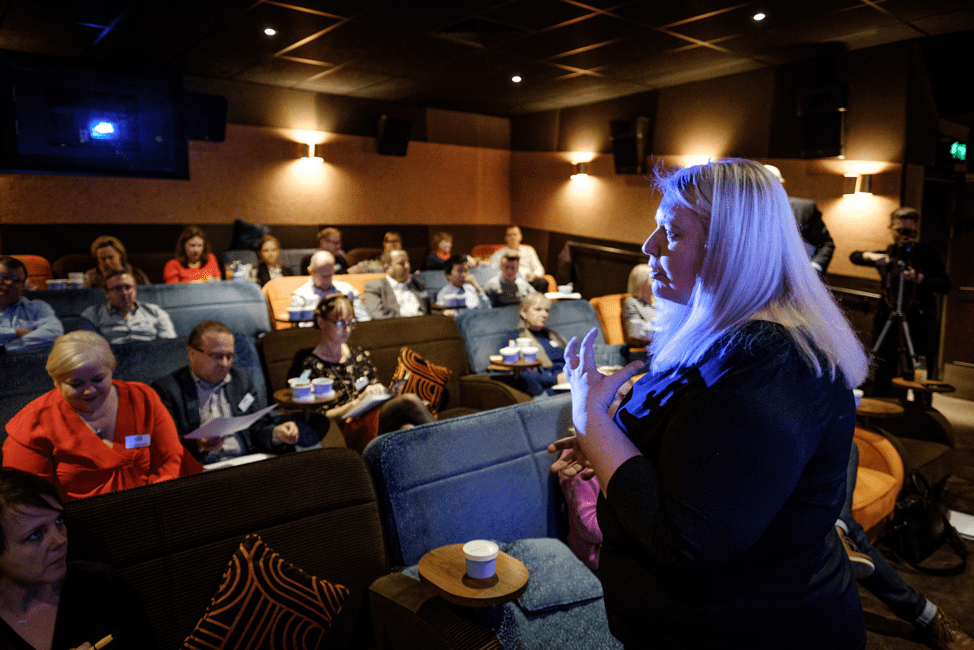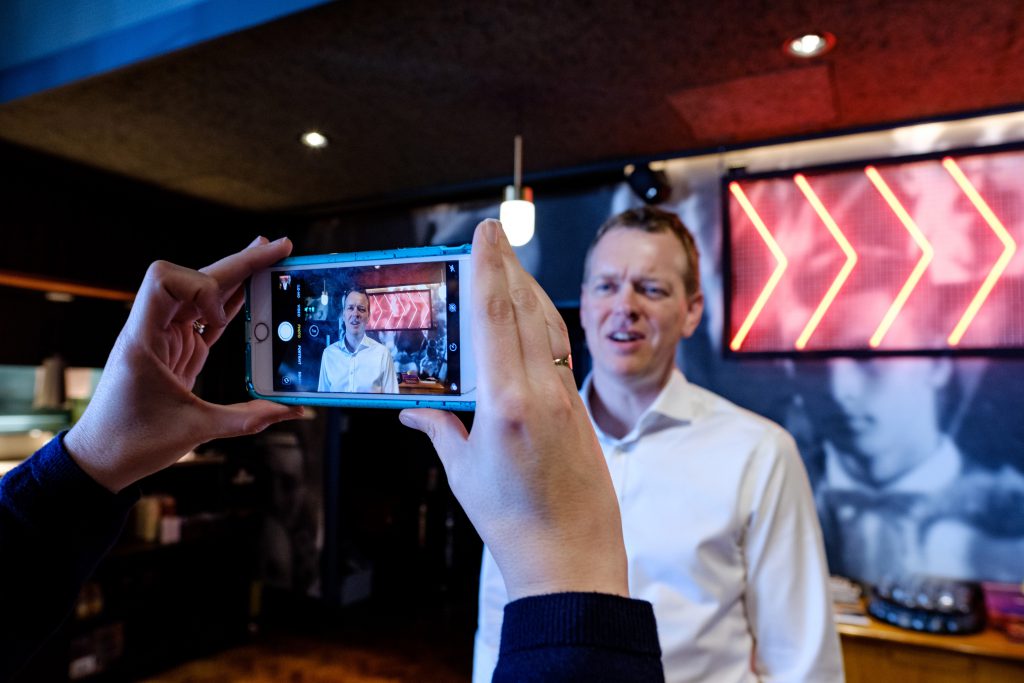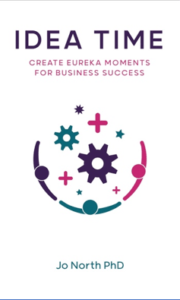Posted in Boost Your Brainpower, Design Thinking, Influencing people, Launch Your Business, Lead Your Team, Self confidence, Study Success by Jo North
In this article I’m going to focus on something which many of us struggle with at some point, and that is how to dare to be different. I’m going to share some really useful insights for you on why daring to be different can be such a challenge for us. Then I’ll outline my really pragmatic and effective 7-step process that will really help you to take action and stand out successfully, for all the right reasons.
Daring to be different is a really interesting and important subject because, by definition, to be creative and innovative at work, we need to be different and do things differently, and that’s not always easy!

Have you ever had any of these challenges?
- You want to take a complete change of direction, perhaps in your career or business, but you are worried about what people might think, or whether you’ve got what it takes to make it successful?
- You want to speak up and offer a completely different perspective, or idea, in the meeting, but you hold back because your colleagues are all in agreement on the way forward, and you don’t want to rock the boat?
- Are all your team meetings creative to a point, but a bit safe and samey?
- You have a great idea for a new product, service or business, but worry about doing something in case it doesn’t work?
From my experience of working with leaders and entrepreneurs as an executive coach, I hear challenges like this very regularly.
And I also hear excuses, disguised as ‘good reasons’ why people sometimes don’t act:
- Time
- I’ve got it pretty good here, or it’s not that bad
- I’ve too many other priorities right now (the time excuse in a different disguise!)
Sometimes these reasons are real. Often they’re excuses.
What does Daring to be Different Mean?
So I thought it would be useful to unpack what daring to be different means before I share some strategies for how to dare to be different confidently and successfully.
When I mind mapped the potential consequences of daring to be different, everything I came up with was either categorically negative or positive, with a few items in the middle of the continuum:
For example, on the negative side, I had some pretty strong words, such as:
- Excluded
- Ostracised
- Ridiculed
- Feared
- Unwanted attention
- Loss
In the middle, I had:
- Possibly risky, or not
- Safe – are you really daring and really different?
- People don’t notice or care one way or the other whether you’re daring to be different or not
- Unusual
- Unexpected
On the positive end were:
- Fresh
- Diverse
- Distinctive
- Extraordinary
- USP
- Standout
- Competitive edge
- Creative
Daring to Be Different is Multi-Layered
Daring to be different can happen on a personal basis, it can be about ideas, or about business products, services, or the underlying business model and much more. It is multi-layered, from our micro thoughts, small actions in conversations with colleagues, to going all out and pitching for that business funding for that potentially amazing new entrepreneurial idea.
And I think there’s a helpful daring to be different and an unhelpful daring to be different, the distinction all coming from whether the intention is to achieve a positive outcome, even when there could be significant disruption involved.
When I think of daring to be different with positive purpose, I think of Bowie, Google, Apple.

Any Positive Disruption is a Creative Act
Any positive disruption is a creative act, and what holds us back from daring to be different, and being the catalyst for positive disruption, is fear.
And please don’t think I’ve always been immune!
Daring to Be Different – My Experience
One of the most significant examples that springs to mind in my career is when I left my role as Deputy MD at East Coast Trains to start my consultancy, The Big Bang Partnership Limited, which owns the Idea Time ® brand.
I’d wanted to start my consultancy years before, but enjoyed my role at Northern Rail, as Commercial Director, so much, and I had a boss that really allowed me to develop and use my creativity, so I stayed.
My reasons, aka excuses, for not doing it were probably pretty good ones – but they were still excuses, or rather reasons that were generated by fear:
- What would people think?
- Would I be able to earn enough?
- Would people be interested in me if I didn’t have a fancy title?
- What if no-one wanted to buy my services?
I wasn’t daring to be different.
And then, one day, after a Sunday lunch at my Mum’s house, something clicked and I realised that, although the job I had was great, what really brought me joy was working in the creativity and innovation space and I felt compelled to make a change.
Ad lib re the story of going home to family, writing the resignation, and my family overcoming my own objections…
And you know, once I’d made the decision, although it was as scary as anything, what I needed to do to progress became clear and I started to act. I won my first twelve-month commercial contract within two weeks of resigning, and earned more in my first year in business that I did as a Director of a large and prominent passenger rail company.
On one hand, the timing was spot on. On the other, I’m not sure what took me so long! I’m now really proud of the business I founded and have built over the last seven years or so, and really love what I do.
Be the Architect of Your Own Career
I say I wonder what took me so long, because when I look back over my career to date, I have literally been the architect of my own professional development, supported by a number of terrific bosses and colleagues who believed in me and cheered me on along the way.
In my early career, if I felt I wanted to learn something, I simply found a job that would literally mean I had no choice but to learn – quite a masochistic approach, I guess, but it never felt like that. It was much more intuitive, and I moved seamlessly and successfully from accounting to HR, to sales, then to marketing and some category management, and general management.
I transferred my skills as I went from retail, to publishing, to transport, and into different types of transport. I now work in utilities, with entrepreneurs, with tech companies, construction, engineering, defence, professional services firms and much more, and am confident that I can step into any industry, learn superfast, and succeed – which I do repeatedly.
As I developed my career I must have seemed very different to some of my colleagues! I remember proposing a market research project to a transport company I worked for, something I’d experienced a lot in the retail sector. I tried to describe the process and benefits to my boss, who just said “I’m not sure I fully get it, but you seem to think that’s it’s such a good idea and that it will help us, so let’s do it!’
I never really worried about whether people would think I could do role in a professional discipline or sector that was new to me in my 20s and 30s, but started to do so more in my 40s, and certainly did around the time that I was at East Coast.
Worrying What People Think is an Evolutionary Benefit
Worrying what people think is an evolutionary benefit rather than one that serves us in the present day. Group inclusion used to be necessary for actual survival, now it’s more about protecting our careers. And of course, we do need to think about how others perceive us to a point because most of us have people who matter to us, who care about us and vice versa.
Also the feedback we get from people who we respect and want the best for us can really help us to succeed. So, everything in moderation, I guess, when it comes to caring about what people think.
When worrying about daring to be different comes down to other concerns, such as ‘will I make enough money?’, or ‘will I succeed or fail?’, how we perceive risk and motivate ourselves can have a huge role to play.
Prevention or Promotion Focus?
For example, from a motivation point of view, we tend to have either a prevention focus, or a promotion focus. Sometimes we can have both at the same time, which can feel really conflicting!
Prevention focus is when we focus on what we have to lose. It helps us to be more careful and often leads to accuracy, deliberation, thoroughness, and a strong leaning towards what are familiar with. The problem is that when it is overdone, it stops us from taking action that may benefit us.
Promotion focus is the opposite – that is, we focus on what we might gain. It can lead to speed, creativity, innovation and embracing risk. Too much promotion focus could make us feel overly optimistic and take action without thinking it through.
Again, moderation is key. We need to have balance. Enough prevention focus that we think things through, plan and de-risk, enough promotion focus to drive us forward, be clear about the gains we want to create and for us to consider that the effort and risk of taking action are worthwhile. Going back to those positive and negative consequences that I mind mapped, and mentioned earlier, it’s about creating enough of a balance to avoid the negatives, and generate some of the positives of daring to be different.

How to Dare to be Different – Step-by-Step Process
Here’s my step-by-step solution to help you to dare to be different, with positive, purposeful intention, more often.
Develop your emotional intelligence, and regularly check in with yourself on how your emotions are influencing your decisions, behaviours and actions.
With advanced levels of emotional intelligence, you can almost dare to be as different as you like, because you will have the self-awareness and skills to manage yourself effectively, as well as the empathy and presence of mind to communicate and collaborate with others in a way that they find stimulating, productive and awesome, rather than whacky, ill-considered and off-beat.
So, emotional intelligence is the key skill set to develop as it underpins everything to do with daring to be different. Think of it as the foundation on top of which everything else is built. For every new venture, challenge or innovation that needs me to dare to be different, I use this 7-step process that I have created based on evidence from behavioural science. It works for everything from micro moments through to big, strategic change. You can hear more about it in the short video below.
As I’m talking through it, think about a time in the past when you dared to something very different, and created a successful result. Or you could think through something that you’d like to do in the future.
- Set your vision, know your intention.
- Develop your self-confidence – see my earlier article, How to become more self-confident, for specific tips about this.
- Create a circle of support & challenge
- Make a commitment – and share it with others for accountability
- Act
- Reflect and learn
- Expand your daring! The more you do it, the easier and more familiar it can become

When I did make the jump from my East Coast role to starting a business, I actually went through these steps myself.
Sometimes these steps aren’t all nicely sequential and linear – you may need to toggle back and forth between a few of them before you can move forward, and that’s absolutely ok. It’s all a natural part of the process.
But What If You Fail?
But what if you do all this and it doesn’t work? What if you look silly, fail, land flat on your face?
Well, you might do sometimes. And if it happens, the biggest tip I can give you is to pick yourself up, spend some time in the reflect and learn space, and ask yourself what, with the benefit of hindsight, you could have done differently to achieve a more successful outcome. Know that you’ve done your best, and that at least you gave it a go. This may feel like very little consolation, but really learning to dare to different successfully is like learning how to do anything else. We may stumble, but we will survive, pick ourselves up, and resolve to try again another day.
We need to:
- Give ourselves permission to feel rubbish about it – but not for too long! If you’re stewing on it, make a definite effort to disrupt your thinking by doing something different, and preferably active, like taking a short walk.
- Keep things in perspective by talking it through with some you trust and who will help you to take a balanced view. Unless you’re in a high stakes role, such as a pilot, surgeon or midwife, it is highly unlikely that you have done any really damage in the big picture of things. Ask yourself how you are likely to feel about the situation in a week, month or year. Will it be as important to you then as it is today?
You dared to be different, with a positive and purposeful intention. You were coming from a good place. Remember that even people who have massive public failures have gone on to achieve fantastic success. For example, several of Henry Ford’s early business ventures failed—quite a few times!—before he founded the successful Ford Motor Company.

You might never of heard of Akio Morita. His first invention was an awful rice cooker that burned rice, which, unsurprisingly wasn’t a commercial success. But he kept at it and finally his little gadget company—Sony—became a household name.
The point is, you can fail—even very publicly and dramatically—get back up, move past the mistake, dare to be different again and achieve outcomes beyond what you may ever imagine is possible.
New things and risk
Whenever we do anything new, there’s the risk that we might not succeed, and often the journey to success isn’t a straight line.
You may have heard of the famous Dunning-Kruger effect, in which as our knowledge and experience grow, so does our self-confidence – with a bit of dip on the way as we realise there is more to be learned than we first thought! We sometimes can set off thinking we know more than we do, and being a bit more confident than may be helpful.
Doing a great job with the prep that I have outlined in my seven-step process isn’t a cast-iron guarantee that you will succeed, but they will definitely increase your chances, and ultimately, sometimes it does come down to being a bit brave, taking a risk and going for it. It may be the best thing you’ve ever done.
Dare to be Different – Your Unique Personal Brand
Jeff Bezos, leader of Amazon, has reportedly said that your personal brand is what people say about you when you leave the room.
When you dare to be different, you are showing your creativity, innovation and vision, which is great. And you may not be everyone’s cup of tea, and that’s a fantastic thing.
Staying safe all the time leads to fostering perceptions of indifference and mediocrity. It’s much better, I think, for some people to really ‘get’ us and appreciate who we are and what we do, and for the others to be clear that our approach isn’t necessarily for them – and vice versa. That’s absolutely more than ok – it’s healthy. Trying to fit in with everyone ultimately means that no-one gets a positive, satisfactory outcome – especially ourselves.
Building your personal brand starts with having clarity on your strengths—what you see in yourself and what others see in you.
Things to reflect on are:
- Who are you, and what do you stand for?
- What are you great at?
- What is your reputation?
- What is your vision for what you want to be known for?
- What are your core strengths?
Once you have identified your strengths, it’s helpful to consider these three things:
1. Be SUPER CLEAR about what your strengths are and how you want to use them
2. Think about how you demonstrate your strengths at work, and how you communicate them
3. Find opportunities that need your strengths, so that you can build on them and showcase them. Use my 7-step process and go for it!
Get in touch
I’d love to hear how you get on, and if you’d like to keep in touch or ask me any questions about how to dare to be different, please do email me at jo@ideatime.co.uk.


Love this blog 🙂 love daring to be different! The 7 steps are really helpful to frame it and make it an intentional and continuous process, including experimenting and learning. Thanks for sharing!
Thank you so much Sarah – really pleased it was useful for you and that you enjoyed it. I hugely appreciate your feedback. Best wishes, Jo